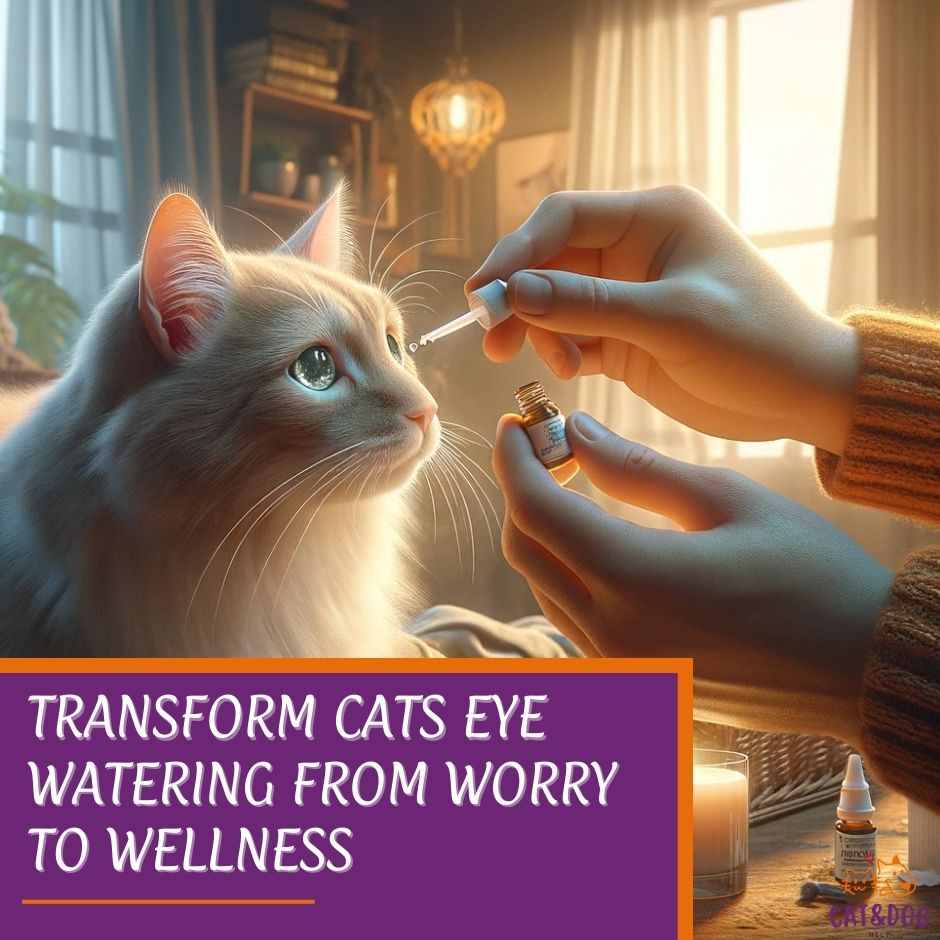Cat’s eye watering, also known as epiphora, can be a surprisingly common issue for our feline friends. You might notice tears streaming down their face or damp fur around their eyes.
This could be just a minor irritation, but it can also indicate something more serious, such as a viral infection or a foreign body, that needs attention from pet parents as it can be a form of health threat.
The tears themselves are not harmful, but they can lead to skin irritation or infection if not managed properly.
As responsible pet parents, it is important to keep an eye out for any changes in your cat’s eye-watering, squinting, and sneezing and seek appropriate care if necessary, as these can be early signs of a host of more serious reasons, such as feline herpes virus or other underlying health conditions. (1)
These can include common allergies triggered by household cleaning products, perfumes, and medications, as well as more serious problems such as infections or exposure to mold and mildew dust.
It is crucial to address these issues promptly to ensure the health and well-being of your feline companion.
In many cases, the cause is minor and will clear up without veterinary care.
However, it is always better to err on the side of caution and seek professional help if you suspect a more serious issue, such as the common eye condition conjunctivitis, also known as pink eye, caused by feline herpes virus. (2)
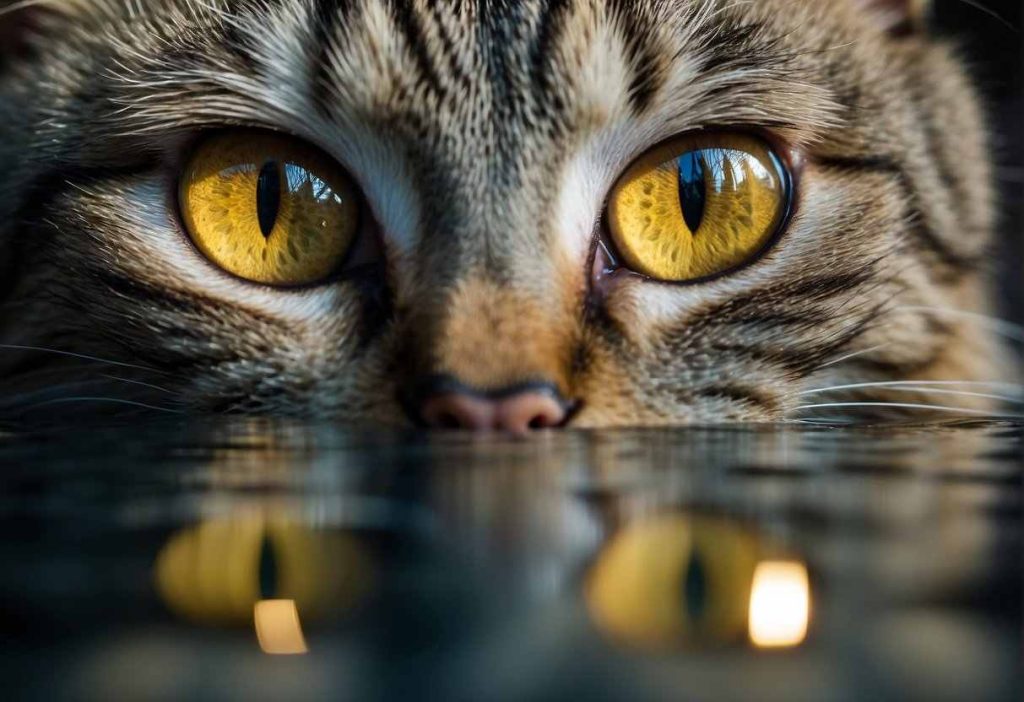
When you see your cat with cat’s watery eyes, take a moment to observe any other symptoms that might be present. Are they blinking excessively, pawing at their face, or do they seem bothered by light?
These behaviors might help you understand if it’s a fleeting issue or a sign of a deeper health concern such as a cat cold or feline upper respiratory infection.
Many cat colds will clear up within a week without the need for veterinary care; however, if your cat’s symptoms become worse or fail to improve within a couple of days make an appointment to see your vet.
Although nasolacrimal obstructions are less common in cats than in dogs, they can cause tears to overflow and run out of the eye, making it important to address them with a veterinarian if your cat’s watery eyes don’t go away.
This is especially important because a cat’s watery eyes can be a sign of a serious disease and the earlier it is diagnosed, the faster they will get better. Suppose you notice your cat’s watery eyes persisting.
In that case, it is important to take them to the vet for a thorough exam to ensure it is not a sign of a more serious health issue, such as a cat’s watery eyes being a symptom of a larger health concern like conjunctivitis or other diseases. (3)
If left untreated, these issues can lead to discomfort and potentially serious health complications for your feline companion.
Remember, if your cat’s watery eyes persist, it is crucial to consult with a veterinarian for proper diagnosis and treatment.
Don’t wait too long to seek medical attention, as early diagnosis can lead to faster recovery for your furry friend.
If your cat’s watery eyes do not clear up, take them to the vet for a thorough exam to ensure it is not a sign of a more serious health issue, such as the cat’s watery eyes being a symptom of a larger health concern like conjunctivitis or other diseases. (4)
It is always better to be safe than
Key Takeaways
- Epiphora in cats can be a harmless symptom or a sign of a health issue.
- Observing accompanying behaviors can provide clues to the underlying cause.
- Persistent watery eyes warrant a professional examination.
Common Causes of Cat’s Eye Watering
Ever noticed your cat’s eyes looking a bit teary? You’re not alone! Watery eyes in cats, or “epiphora,” could be trying to tell you something. Let’s unravel this little mystery together.
Infections and Allergies: Just like us, cats can catch infections or have allergic reactions. Upper respiratory infections are the usual suspects here.
Picture your kitty sneezing and coughing with watery eyes—no fun, right? On the flip side, allergies can make their eyes water faster than a chopped onion!
- Identifying Symptoms: Keep an eye out for redness or excessive blinking. If your cat’s eyes are sending out distress signals with gunky discharge, it’s time to listen.
Common Allergens and Infections:
- Pollen (5)
- Mold
- Dust
- Certain medications
- Strong perfumes
- Cleaning products
Physical and Environmental Factors: Sometimes, it’s about what’s in front of their eyes. A bit of dust or direct trauma to the eye can cause tearing up.
And don’t forget about blocked tear ducts—that would be the plumbing problem of the feline world!
Impact of Weather and Pollutants: Yes, even the weather can make your cat’s eyes water. Think of it as their tiny eye umbrellas battling against irritants like smoke or pollutants in the air.
Breed-Specific Vulnerabilities: Some breeds, especially those with flat faces like Persians, often have teary tales to tell. Those big, beautiful eyes might not drain well, making them more prone to watery woes.
So, if your furball’s eyes are getting misty-eyed, it’s probably worth a chat with your vet. Just remember, while a little eye water can be normal, a fountain is probably a sign to seek some help.
Keep those kitty peepers clear and comfortable, and they’ll be busy judging you again in no time!
Professional Diagnosis and Treatment
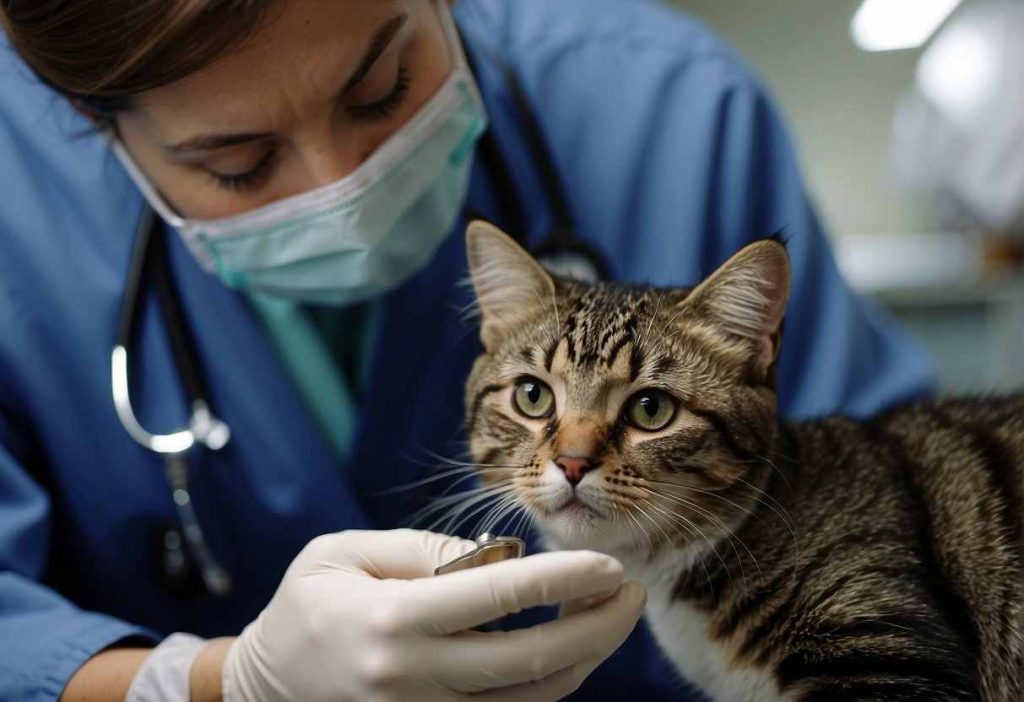
Has your furball been squinting or pawing at their eyes? It’s time to visit the vet. When you take your cat to the veterinarian, they’ll look into those glistening eyes to pinpoint the issue.
Here’s a peek at what that visit might entail:
Veterinary Examination and Tests
Initially, they’ll conduct a thorough physical examination—yes, even the whiskers get a look-over. Specifically, they’ll inspect:
- Eye discharge: Is it clear or like last week’s oatmeal?
- Eye structure: Are they as round as buttons or showing signs of swelling?
What to Expect at the Vet
Your vet may talk to you about your cat’s history—like those times Mr. Whiskers tried to fly or ate something odd. Next, the focus shifts to the eyes. Grab a seat; this is where the magic happens.
Diagnostic Tests for Eye Conditions
They may wield a few gadgets and potions for diagnostic tests, such as:
- Fluorescein stain test—to check for cornea scratches
- Schirmer tear test—ensuring your kitty’s eyes are as moist as a dew-covered daisy
- Tonometry—testing for the pressures like they’re pressing grapes for wine
Medical Treatments and Interventions
If the vet finds something, treatment options can range from the simple to the complex, including:
- Medications and Eye Drops: A few droplets could do the trick.
- Surgical Options for Severe Cases: For braver souls, sometimes surgery is the road less traveled but needed. (6)
Remember, while you’re there, soak up the knowledge like a sponge. Don’t hesitate to ask questions. After all, you and your vet team are the dynamic duo fighting against your cat’s eye woes!
Home Care Strategies for Watery Eyes

Initial Remedies and Care:
- Gentle Wiping: Start with a soft, damp cloth to wipe away any discharge. Make sure it’s a different cloth each time to avoid spreading any infection.
- Stay Clear of Irritants: Has your cat been snooping around dusty corners? Minimize contact with potential irritants like smoke, dust, or perfumed products.
Simple Home Treatments:
- Saline Solution: A dab of saline can help flush out the eyes. Just a regular drug-store brand will do.
Monitoring and Observation Tips:
- Keep Tabs: Is the watering getting better or worse? Jot down any changes or patterns you notice.
- Appetite and Behavior Checks: An active and hungry cat is usually a healthy cat, so track if your kitty’s routines alter.
When to Escalate to Professional Care:
It’s pivotal to know when home care has hit its limit:
- Change in Discharge: If it turns from clear to yellow or green, that’s your cue.
- Persistent Issues: No improvement after a few days? Time for a vet visit.
Recognizing Signs of Serious Conditions:
Be vigilant for red flags like squinting, swollen eyes, or pawing at the face. These symptoms are a loud and clear SOS to seek professional advice pronto.
Preparing for a Veterinary Visit:
- Symptom Summary: Arm yourself with a timeline of symptoms to report to your vet—it could be key in diagnosis.
- Past Incidents: If this isn’t the first eye-watering rodeo, bring that up too. Past conditions can be a game-changer in understanding the current one.
Remember, it’s best to err on the side of caution when it comes to your cat’s health.
No question is too small, and your vet’s there to help—after all, they’re as eager as you are to see your kitty content and clear-eyed again!
Preventative Measures for Eye Health

Daily Eye Care Routines
- Gently wipe the corners of your cat’s eyes with a soft, damp cloth to remove any dirt or debris.
- Always use a different section of the cloth for each eye to prevent cross-contamination.
Cleaning Techniques
- Opt for vet-recommended wipes or solutions specifically designed for cats. These are mild and safe for regular use.
Environmental Adjustments
- Keep your home free from dust and smoke, which means sweeping those floors and avoiding indoor smoking.
- Ensure your cat’s play areas are well-ventilated and clean.
Avoiding Common Eye Irritants
- Think about it, would you enjoy shampoo in your eyes? Nope! Be extra careful during bath time to avoid soaps and shampoos around the face.
Identifying and Eliminating Allergens
- Like us, cats can be sensitive to pollen, mold, and perfumes. Watch for reactions and talk to your vet about allergy testing if needed.
- Ensure their bedding and favorite spots are cleaned regularly to reduce allergen exposure.
Protective Measures for Sensitive Breeds
- Breeds with protruding eyes or folds of skin may need special care. Ask your vet about protective eyewear or specific cleaning routines.
By incorporating these steps, your cat’s eyes will have a better chance of staying sparkly and clear. Just imagine those bright eyes thanking you for the extra TLC!
Remember, if eye problems persist, a vet visit is a must. Happy pampering!
Managing Chronic and Breed-Specific Eye Issues
When your feline friend starts getting teary-eyed more often than you during a sappy movie, it’s time to consider whether they might have a chronic eye condition or a breed-specific issue.
Let’s chat about how you can manage these tear-jerkers.
Long-Term Care for Chronic Conditions Dealing with chronic watery eyes in cats usually involves a daily routine to keep those peepers pristine:
- Gently clean around the eyes with unscented pet-friendly wipes.
- Stay vigilant for changes like increased redness or discharge.
- Talk to your vet about supplements or medications that may help.
Lifestyle Adjustments Just like tweaking your schedule to fit in a yoga class, sometimes small changes at home can make a big difference:
- Reduce potential allergens like smoke or strong fragrances.
- Ensure your kitty’s living environment is stress-free and comfortable.
- Offer a diet that supports overall health and immunity.
Ongoing Veterinary Support It’s crucial to have your vet on speed dial:
- Schedule regular check-ups.
- Be proactive about treatments for infections or inflammations.
Special Considerations for Brachycephalic Breeds Cats with squished faces, like Persians, often have more eye issues due to their unique structure. Pay extra attention to:
- Keeping those adorable wrinkly faces clean and dry.
- Being aware of signs that indicate their vision might be impaired.
Understanding Breed-Specific Challenges Each breed comes with its handbook of quirks:
- Be knowledgeable about your cat’s specific breed and their eye care needs.
- Engage with breed-specific forums or groups for support and advice.
Tailored Care and Prevention Strategies Finally, prevention is your best friend:
- Protect their eyes during baths or while applying flea treatments.
- Consider protective accessories if your cat enjoys a good romp outdoors.
Remember, keeping those kitty eyes clear might require some effort, but seeing them bright and healthy is worth every bit!
Global Perspectives on Cat Eye Health
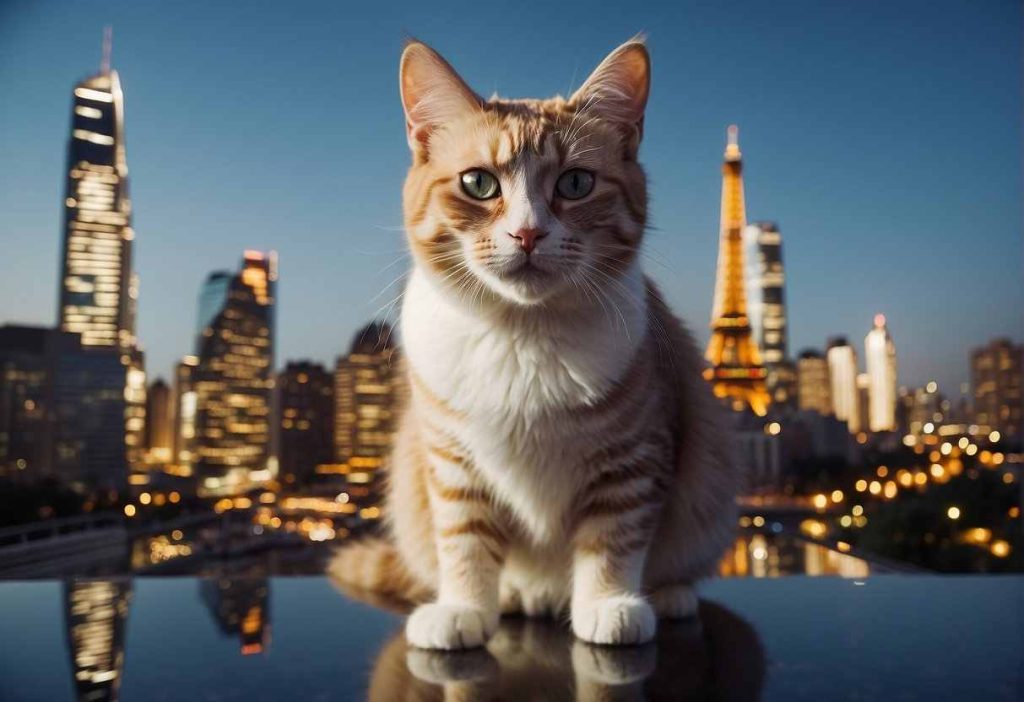
These behaviors might help you understand if it’s a fleeting issue or a sign of a deeper health concern such as a foreign body trapped in the eye or a blocked nasolacrimal duct (tear duct).
Although nasolacrimal obstructions are less common in cats than in dogs, they can cause tears to overflow and run out of the eye, making it important to address them with a veterinarian.
Additionally, if your cat is showing obvious signs of pain or swelling in their eye, it could be a sign of a more serious and painful condition, such as glaucoma.
Understanding the time symptoms of glaucoma in cats is crucial, as it can indicate the need for emergency veterinary care to prevent further discomfort and potential vision loss.
Environmental Impact on Eye Health Did you know that where you and your cat live could influence those teary eyes? It’s true!
Elements like smog in industrial areas or pollen in rural landscapes can aggravate your kitty’s eyes. For example:
- Urban Cats: May struggle with the pollution that can irritate their little peepers.
- Country Cats: Might battle with seasonal allergens that can cause watery eyes.
In both cases, keeping a keen eye on air quality forecasts can help you protect your cat’s vision.
Regional Differences in Eye Conditions It’s fascinating how eye conditions in cats can differ from region to region.
While a cat living in a Mediterranean climate might experience dryness due to the arid air, a cat in a tropical area could face fungal infections due to humidity. Here’s what you might expect:
- Dry Climates: More common cases of dry eye syndrome.
- Humid Climates: Increased risk of eye infections.
Adjusting your cat’s care depending on the prevalent local conditions is a smart move.
Adapting Care to Various Climates Your approach to your cat’s eye health might need to change with the seasons or if you’re a globetrotter with your pet.
In colder climates, you might need to watch out for signs of discomfort due to indoor heating systems. Conversely, cats in hotter climates require frequent hydration, which can also benefit eye moisture.
However, it is important to note that this advice is for informational purposes only and does not constitute medical advice regarding pets.
For an accurate diagnosis of your pet’s condition, please make an appointment with your vet for professional medical advice on eye irritation treatment.
Here’s a quick guide:
| Climate | Potential Issue | Care Tips |
| Cold | Dry air indoors | Use a humidifier; Regular checks |
| Hot | Dehydration | Ensure water; Watch for dryness |
Remember, your vet is the ultimate travel guide for your cat’s eye health, so never hesitate to reach out if there’s a sudden case of waterworks!
Whether you’re living in bustling cities or the serene countryside, taking note of these details can keep your cat’s eyes as sharp and clear as their reflexes.
So, cozy up with your cat, and maybe have a little chat about where you two will venture next—eye health ready!
Quick Recap
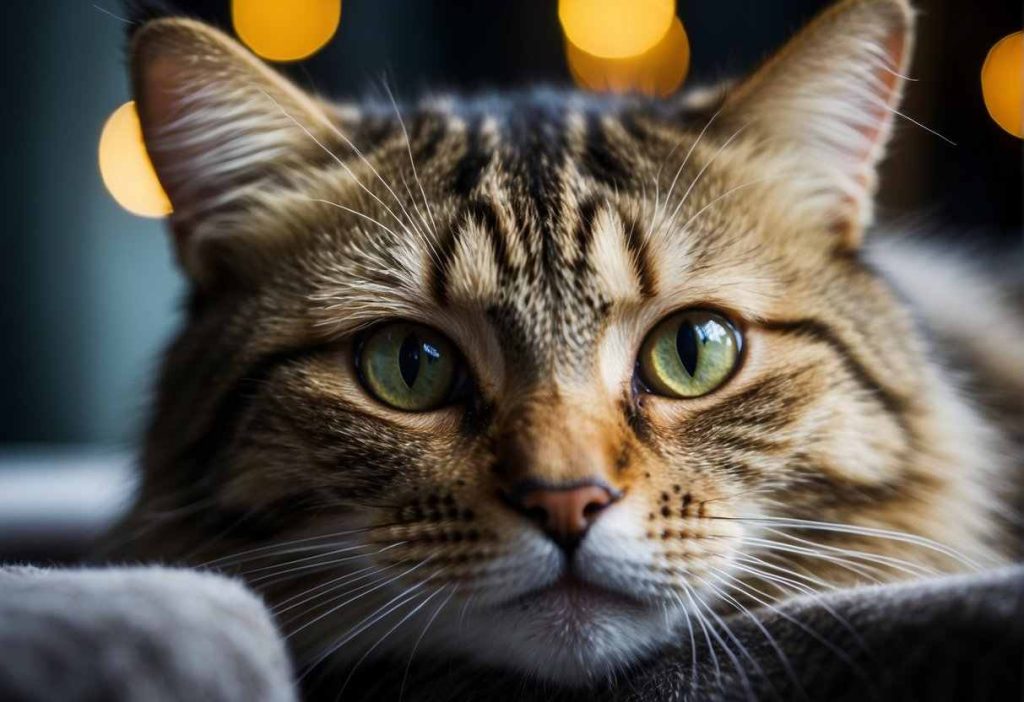
Let’s do a quick check-in on what might cause those teary peepers.
- Upper Respiratory Infections: Think of it like the kitty cold. It can make their eyes weep just like yours do when you’re feeling under the weather. (7)
- Corneal Injuries: Cats are curious, and sometimes that means a scratch right on the eye. Ouch! That’s bound to cause some watering. (8)
- Blocked Tear Ducts: These can cause tears to overflow because they aren’t draining properly.
- Eye Ulcers: If your cat’s pawing at their eye or they’re squinting, we might be looking at an ulcer here. (
Symptoms to Watch For:
- Red or sore eyes
- Squinting or winking
- Rubbing their head against things
- Discharge that’s clear, white, or brown-tinged
Remember, you’re not alone in this! Many cat owners face these issues. Stay proactive—regular check-ups with the vet can catch these eye concerns early on.
And hey, while no one’s handing out medals for noticing your cat’s watery eyes, it’s definitely a sign you care a ton. So, keep an eye on those… well, moist outer layer of their eyes!
If you see any changes or if Mr. Whiskers isn’t his usual playful self, there’s a good chance it might be time for a vet visit for early diagnosis.
Your cat’s eyes are windows to their health, so let’s keep those curtains clean and clear, shall we?
Remember, if your cat’s eyes are excessively watery or have a clear discharge, yellow discharge, or any sign of bacterial infection, such as redness or swelling, for more than a day or two, or if your cat is showing signs of pain or symptoms of infection, it’s time to head to the vet for an eye examination.
Your veterinarian will be able to examine your cat’s eyes and recommend appropriate treatments to help relieve any discomfort your cat may be experiencing.
Frequently Asked Questions

Curious about why your furry friend’s eyes are watering? I’ve got the scoop on this common feline issue to help ease your mind and potentially ease their discomfort!
What are the most common causes of watery eyes in cats?
Watery eyes in your kitty can be due to allergies, infections, blocked tear ducts, or something as simple as a foreign object in the eye.
From pollen to perfumes, common allergens affecting humans can also bother cats.
How can I tell if my cat’s watery eyes are a sign of a serious condition?
Keep an eye out for symptoms like inflammation, redness, or an unusual discharge. These could hint at conditions like conjunctivitis.
If associated with sneezing or other signs of respiratory infections, a vet visit is wise.
What should I do if my cat’s eyes start watering suddenly?
If your cat’s eyes become watery out of the blue, check for obvious irritants like smoke or shampoo. Removal is the first step.
If irritation persists, consider seeking veterinary advice to rule out other potential causes.
Are certain cat breeds more prone to eye-watering issues?
Yes, brachycephalic breeds, like Persians, with their distinctive flat faces and big, round eyes, are more susceptible to watery eyes because of their facial structure.
Can home remedies be effective for treating my cat’s watery eyes?
While some mild cases may be alleviated with gentle cleaning around the eye with a soft, damp cloth, it’s crucial to avoid self-medicating without proper vet guidance.
Home remedies might not address the root cause.
What are the treatment options for chronic eye conditions in cats?
Treatment varies widely, from antibiotics for infections to surgery for congenital defects.
Your veterinarian may specifically recommend eye drops, ointments, or other medicines based on the underlying issue.
Is it necessary to take my cat to the vet for watery eyes?
A vet visit is recommended especially if you notice symptoms like redness, persistent discharge, or if your cat seems to be in pain.
Timely intervention can prevent more serious complications.
- How to Perform at an Online Casino - July 7, 2025
- Free Slots With Bonus and Free Spins - July 6, 2025

